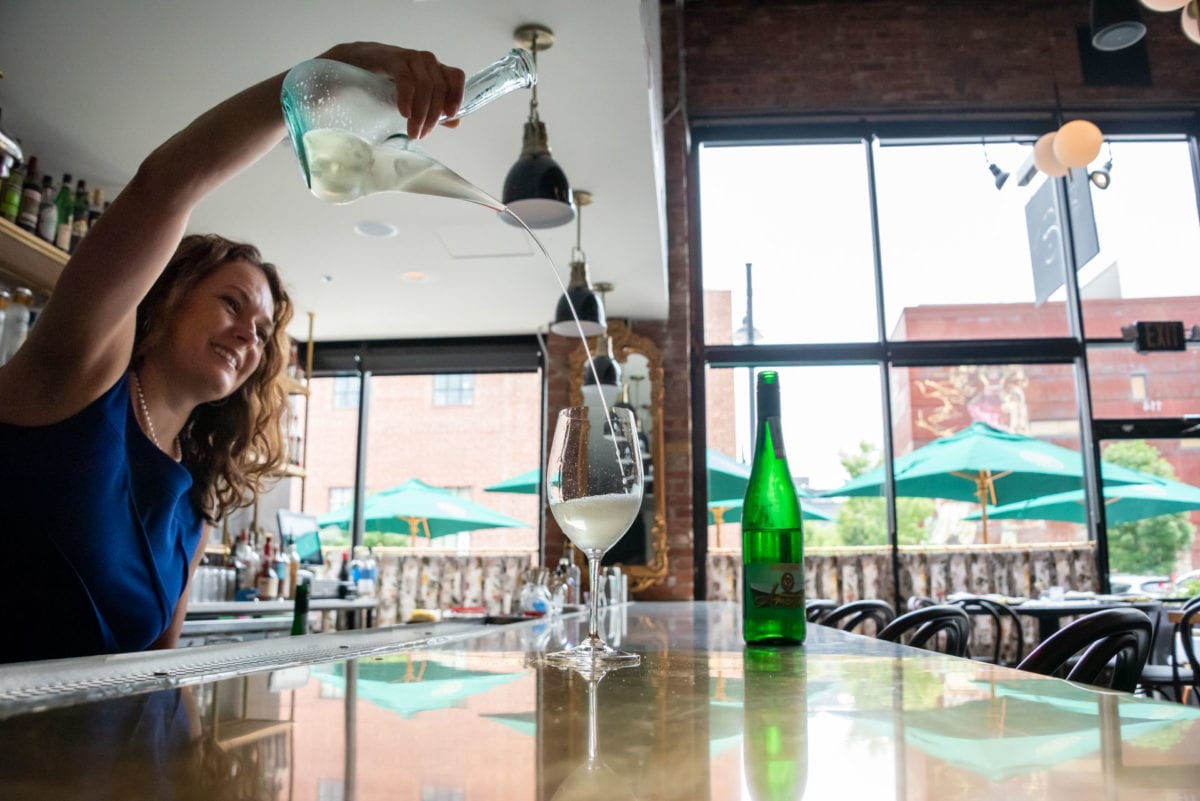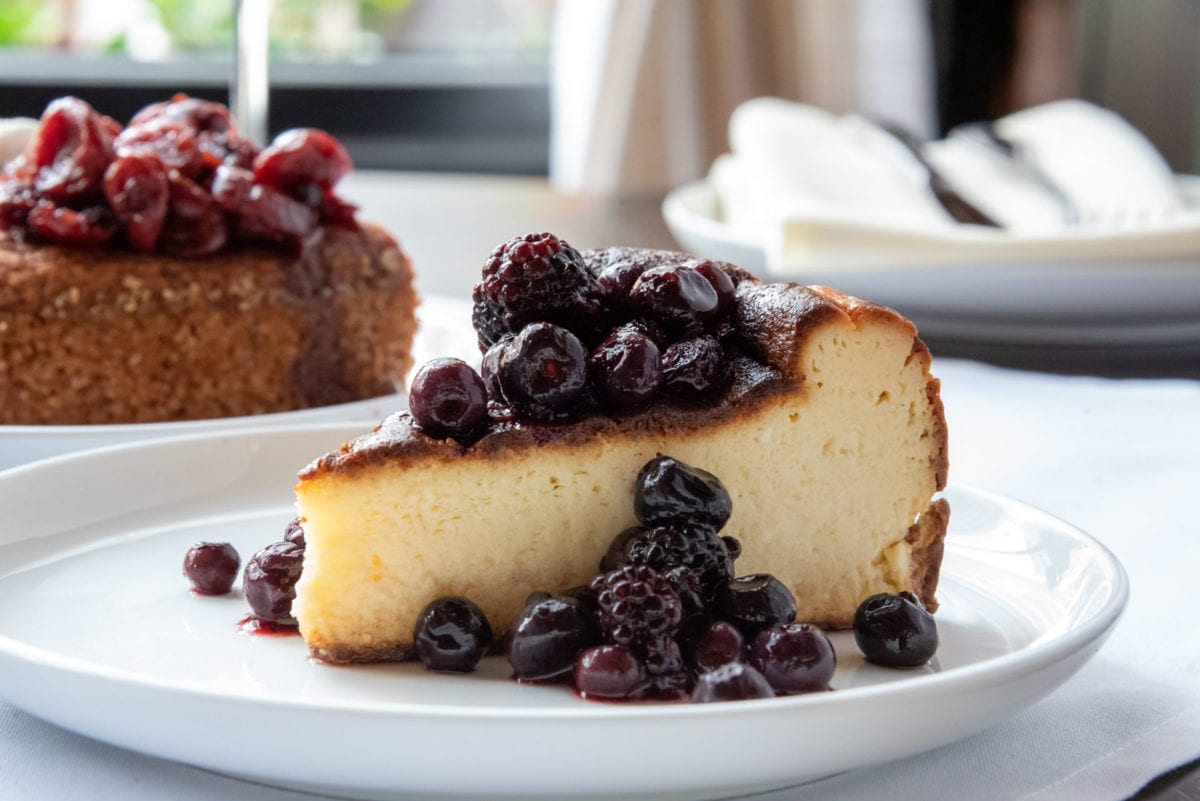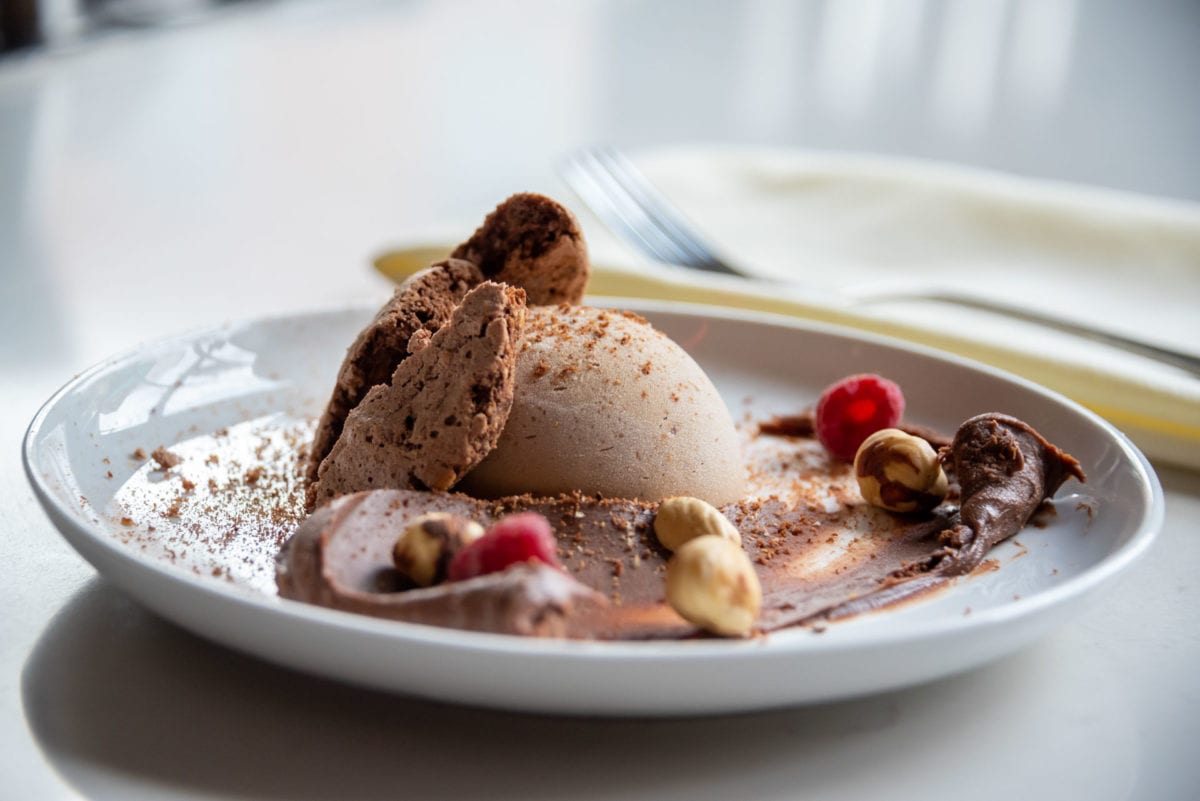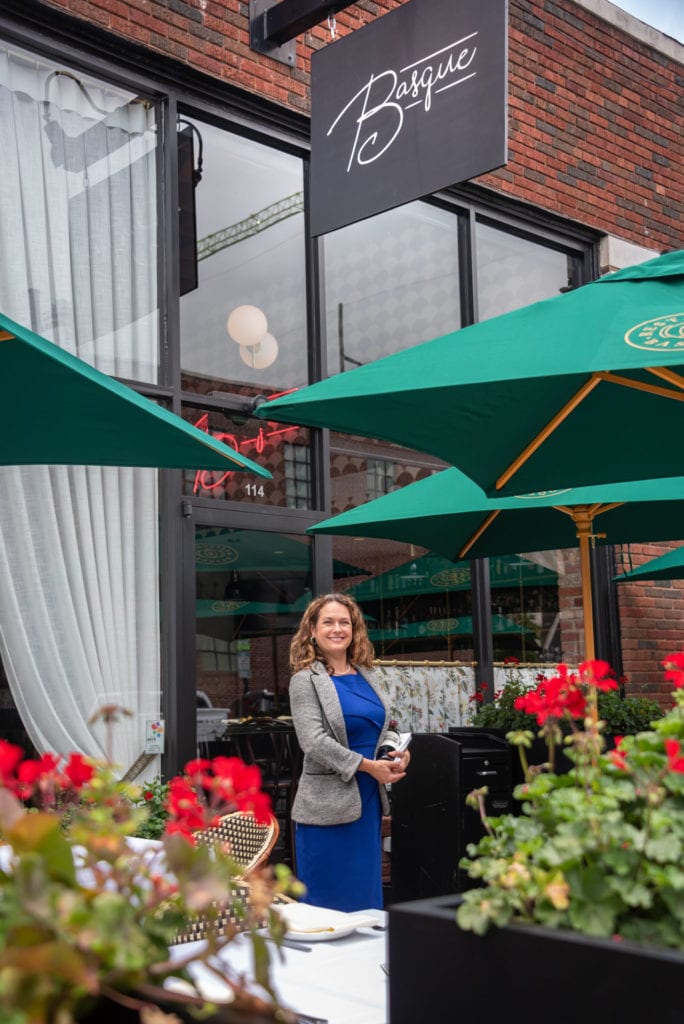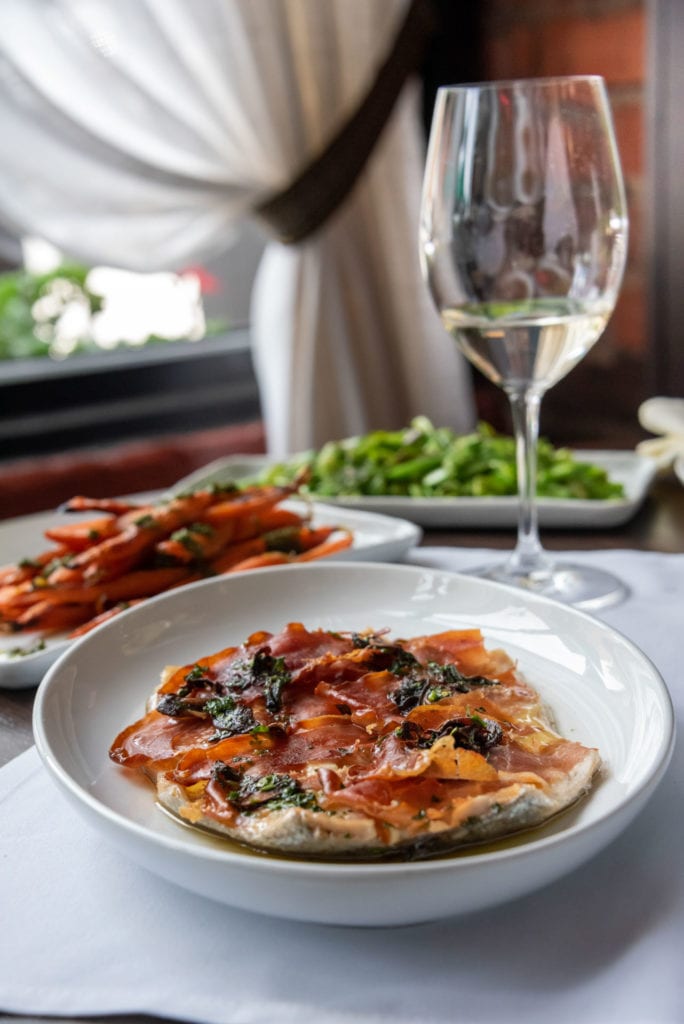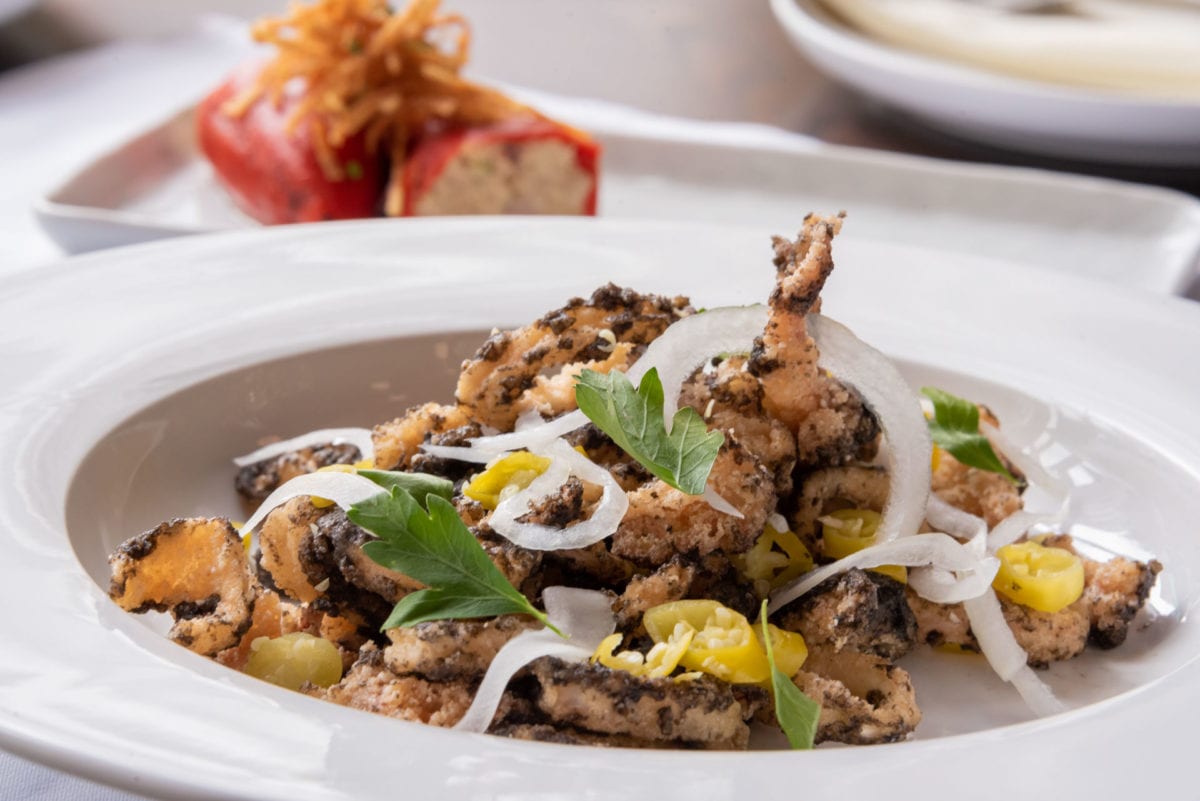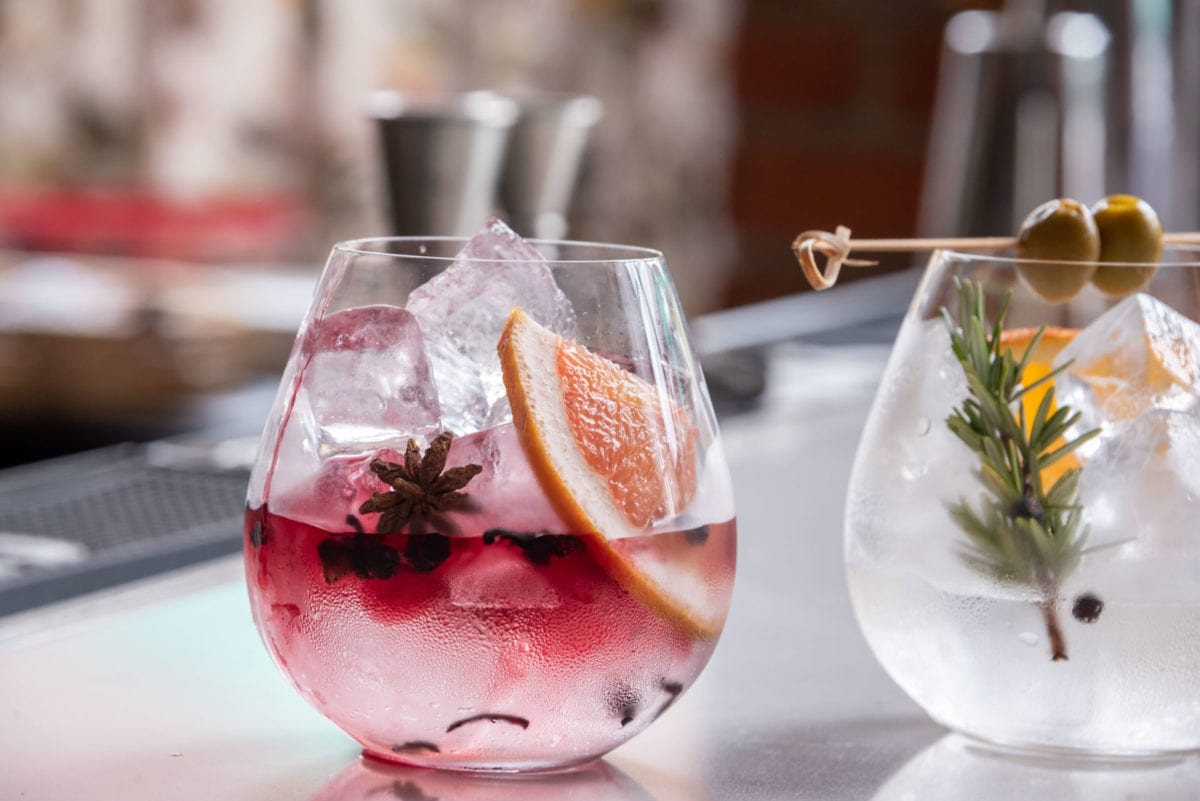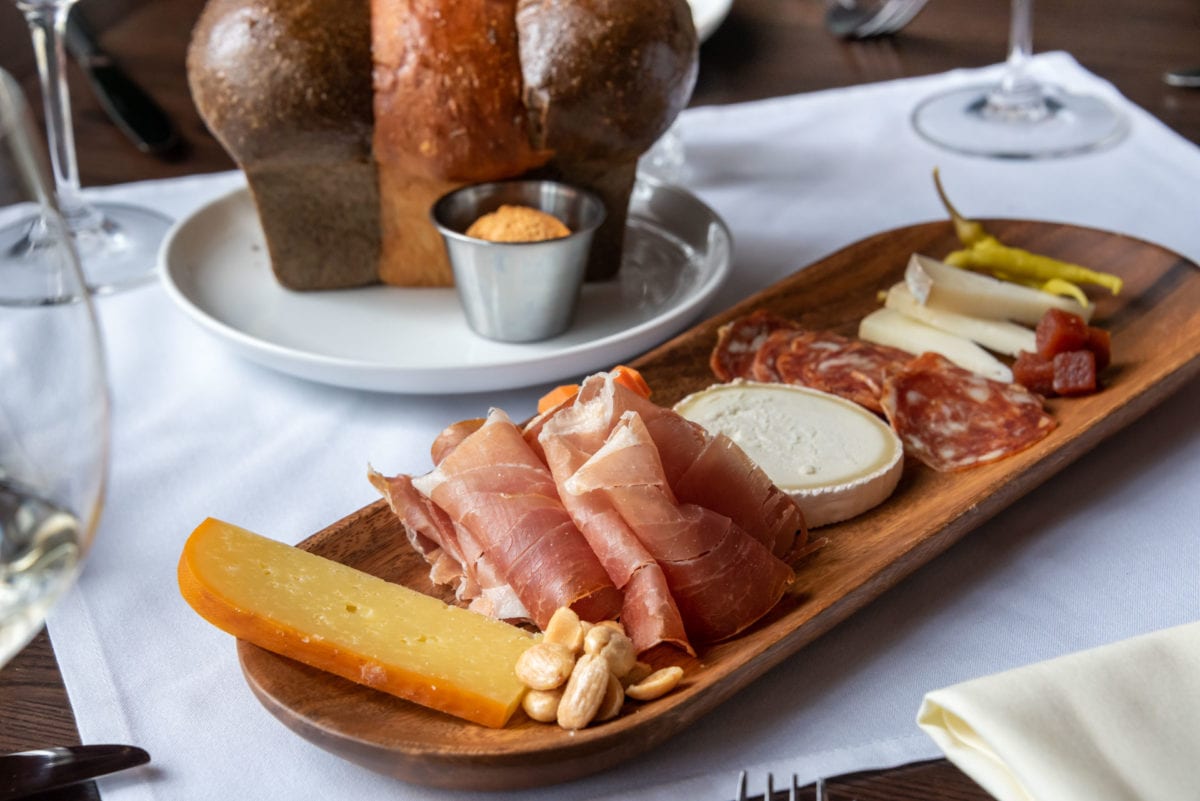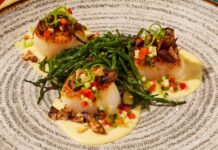In downtown Tulsa, the restaurant Basque is just down the street from Amelia’s – and yes, they’re related. You enter through a small retail market, go ‘round a corner, and suddenly you’re in a friendly, bustling room with soaring ceilings, a tile-lined bar, lots of bistro-style chairs and tables, and bright, exuberant decor.
The concept is Spain – specifically the Basque region in the north. A good choice, since many of Spain’s top chefs hail from there.
“We’re getting pallets loaded with ingredients from Spain,” enthuses Andrew Donovan, the restaurant’s executive chef who also created Spanish small plates at the turn of the millennium at the popular New York restaurant Tia Pol. “We are importing a vast majority of our ingredients from Spain. I’ve hooked up with one of Tia Pol’s main suppliers, so what we use is flown from Spain to New York to Tulsa. Piquillo peppers, pimenton, olive oil, sherry vinegar, all the cheeses are from Spain. We’re doing our best to have authenticity.”
Owner Amelia Eesley continues: “What we’re trying to do is to create a different kind of dining experience: the very European style of having waves of plates come out of the kitchen, and you try everything. This is dining Basque-style.”
There are no appetizers and entrées. There are plates of various sizes … big ones of meat and fish; tiny gems including one with a quail’s egg served sunny-side up on chorizo; and mid-sized ones, some of awe-inspiring complexity, featuring supremely Spanish and always surprising riffs on shrimp or calamari or snails. Each dish is a work of art. You order whatever catches your fancy, going in with an open mind.
Donovan and Eesley have put a lot of thought, time and research into making sure that ingredients, techniques and tastes are truly Spanish. Donovan, a lucky man, once spent weeks backpacking around the Basque region, eating all the way. Still, quality is the No. 1 goal.
“When I first got the job at Tia Pol, I was terrified,” recalls Donovan. “I’m from North Carolina and I had to create six new Spanish dishes every day. But then, instead of worrying about how authentic my specials were, I started making good, creative dishes. People come for good food.”
Basque strikes a happy medium between creativity and authenticity. One dish might have octopus imported from Spain, sous-vided then grilled and served with pine nuts and Spanish olives on skewers. But the traditional dish that inspired it, pulpo a la Gallega, features octopus boiled in a huge cauldron. Grilled is tastier.
The city of Barcelona also inspired another menu item – a ham and cheese sandwich Donovan named Bikini, just because a popular nightclub in Barcelona serves a sandwich with the same name. But, as Eesley is quick to point out, their sandwich is extremely classic to the Basque region and uses the finest Spanish Serrano ham and Manchego cheese.
Another dish epitomizes Donovan’s approach. When making their version of the classic Basque dish chipirones in su tinta, he opted for fried calamari because, if they used the authentic sauteed squid, no one would like it. The original dish uses squid ink, rice and onion; Donovan’s uses these same ingredients, but in different ways. The rice is rice flour and the ink is used in the sauce.
“I like to think that our dish is unique,” he says. “It respects Basque culture but it’s our own. I always tell the staff the history of the classic dish behind each of our recipes. I believe that the more knowledge you have, the better you’ll be. You never lose the thirst for knowledge.”
Basque is a team effort. There’s Zach Pittman, who designed a duck entrée that has, as one small component, a Mexican-style molé that takes ten hours to prepare. Morgan Barkley and Emily Price, those superlative bakers, have input on a lot of dishes. They make the fabulous pillowy squid ink bread, as well as the brioche that accompanies the decadent foie gras torchon. They have also become line cooks.
“I would never tell Morgan and Emily: ‘Do these five pastry dishes,’” says Donovan. “I’d describe the vision, the culture, the vibe, and they’d focus their strengths and develop the recipes themselves. I wrote the menu but I never told anyone, ‘this is the recipe to use.’ I’d tell Zach what I was looking for in a dish, he’d create a recipe, and then we’d refine it together. Amelia and I decide in what direction we’re sailing, but it’s the crew that hoists the sails, maintains the engines, runs the boat.”
It’s a group effort and yet… “I’ve worked in so many different places,” says Donovan, “and this one comes straight from the heart. What we have in Basque is a style that’s very personal to me. As I was devising our dishes, a lifetime’s knowledge, things I didn’t even know I knew popped into the mix. I’d find myself reliving memories from Spain and my Tia Pol days, my life’s highlights. Our dishes are simple, though the techniques we use are complex. We take a few ingredients, season properly and cook them well. This is who I am as a chef.”























